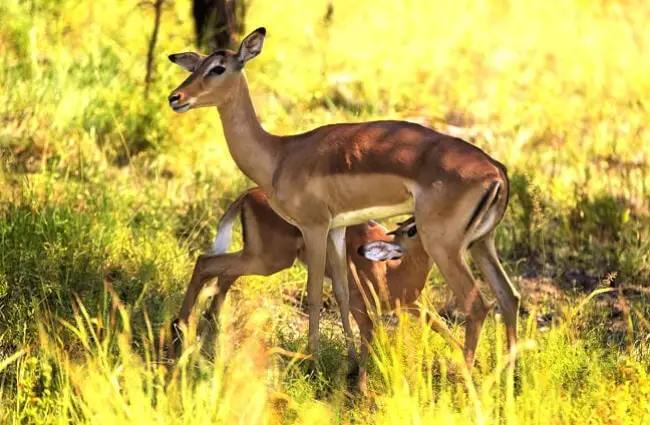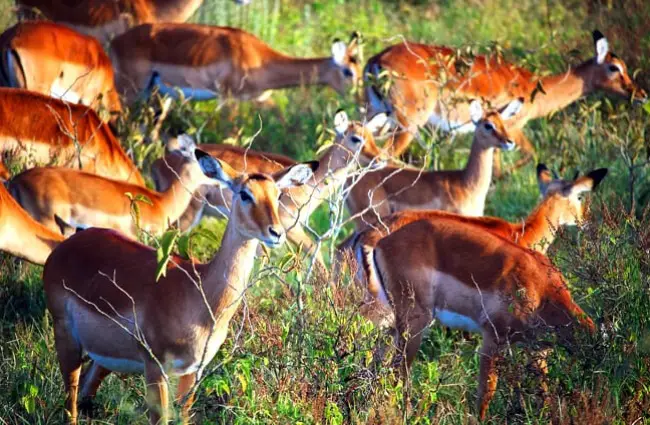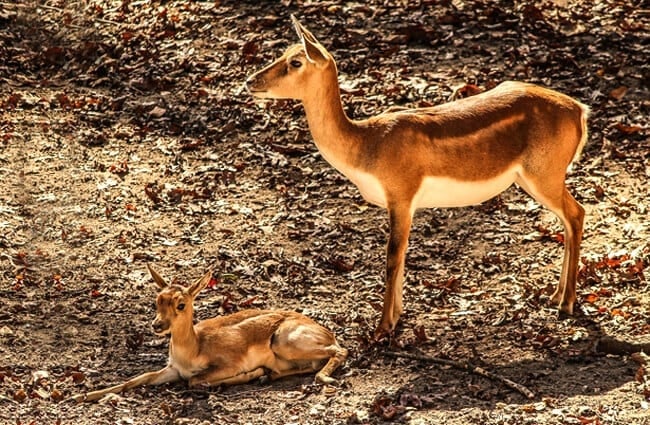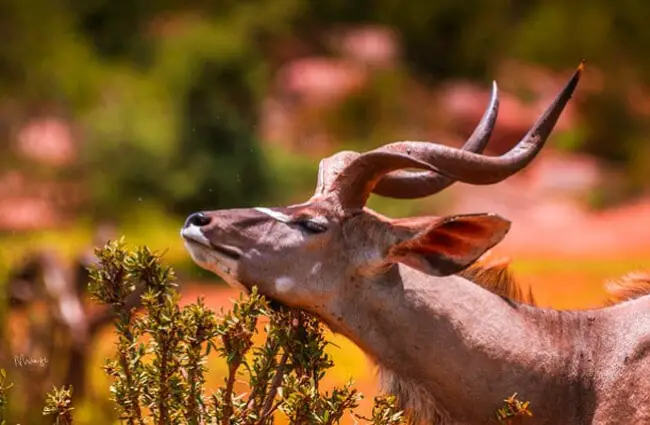Meet the Impala: Africa’s Graceful Antelope
The impala, Aepyceros melampus, is a medium-sized antelope found in eastern and southern Africa. Instantly recognizable for its sleek reddish-brown coat, contrasting black markings, and impressive leaping ability, the impala is a common sight in many African landscapes. More than just a beautiful animal, the impala plays a critical role in its ecosystem and holds a fascinating place in the cultural heritage of the region.

Physical Characteristics & Identifying Features
Adult impalas stand between 75 and 95 centimeters tall at the shoulder and weigh between 40 and 70 kilograms. Males, known as rams, are generally larger than females. A key characteristic is the distinctive M marking on their rump, formed by the dark tail and contrasting lighter fur. They possess long, slender legs built for speed and agility, and their coat provides excellent camouflage within savanna and woodland habitats. Both sexes have ringed, slightly ridged horns, though those of rams are thicker and more curved.
Habitat & Distribution
Impala thrive in a variety of habitats, primarily savanna, woodland, and floodplains. They prefer areas near a reliable source of water and the availability of nutritious grasses and browsing vegetation. Their distribution stretches across eastern and southern Africa, from Kenya and Tanzania southwards through Mozambique, Zimbabwe, Botswana, Namibia, and South Africa. They are notably absent from dense rainforests and arid deserts.
Diet & Feeding Habits
Impala are primarily grazers, feeding on grasses for much of the year. However, they are opportunistic feeders and will also browse on leaves, shoots, fruits, and flowers when available. They are highly selective in their feeding, choosing the most nutritious parts of plants. Their efficient digestive system allows them to extract maximum nutrients from relatively low-quality forage. They obtain much of their water through the plants they consume, but will drink from rivers, lakes, and waterholes when possible.

Social Behavior & Herd Dynamics
Impala exhibit complex social behavior. During much of the year, they live in herds composed of females, young, and non-breeding males. These herds can range in size from a few individuals to several hundred. Breeding males, however, typically live a more solitary existence or form smaller bachelor groups. During the breeding season, males establish territories and compete for access to females. A dominant male will attract and mate with numerous females within his territory.
Reproduction & Life Cycle
Impala have a relatively short gestation period of around seven months. Females typically give birth to a single calf, although twins can occur. Calves are born during the rainy season, when food is abundant. They are precocial, meaning they are relatively well developed at birth and able to stand and walk within minutes. Calves remain close to their mothers for several months, relying on them for protection and nourishment. Impala typically live for ten to fifteen years in the wild.

Predators & Defense Mechanisms
Impala face predation from a variety of carnivores, including lions, leopards, cheetahs, wild dogs, and hyenas. Their primary defense mechanisms are speed, agility, and alertness. They can run at speeds of up to fifty kilometers per hour and leap incredible distances—up to ten meters in length and three meters in height—to evade predators. They also rely on alarm calls and collective vigilance to detect and respond to threats. A stotting behavior, where the impala leaps high into the air with all four legs extended, is thought to signal to predators that it is fit and not worth chasing.
Ecological Role & Interactions
Impala play a vital role in maintaining the health of their ecosystem. As herbivores, they help to shape vegetation structure and prevent overgrowth. They also serve as an important prey species for predators, contributing to the food web. Their grazing habits can promote plant diversity by creating opportunities for new growth. They also indirectly benefit other herbivores by creating shorter vegetation, making it easier for them to access food.

A Detailed Look at Impala Evolution
The evolutionary history of the impala is fascinating. They belong to the tribe Aepycerotini, a relatively small group of African antelopes. Fossil evidence suggests that their ancestors were more heavily built and inhabited forested areas. Over time, they adapted to more open savanna habitats, becoming more slender and developing their exceptional leaping abilities. Their unique horn structure is also believed to be a relatively recent evolutionary development.
Impala & Human Culture
Impala hold cultural significance for many African communities. They are often depicted in rock art and feature in traditional stories and folklore. They are a valuable source of meat and hides, and are sustainably hunted in some areas. However, unsustainable hunting and habitat loss pose ongoing threats to their populations.

Encountering Impala in the Wild: A Guide
If you are fortunate enough to encounter impala in the wild, it is important to observe them from a respectful distance. Avoid approaching them directly, as this may cause them to become stressed. If you are in a vehicle, maintain a safe distance and drive slowly. Never attempt to feed them, as this can disrupt their natural foraging behavior. If they approach you, remain calm and avoid making sudden movements.
Impala in Captivity: Zookeeper Considerations
Caring for impala in captivity requires a thorough understanding of their natural history and behavior. Providing a spacious enclosure with a mix of grazing and browsing vegetation is essential. They need access to clean water and shelter from the elements. A carefully formulated diet that mimics their natural foraging habits is crucial. Regular veterinary care is also important to monitor their health and prevent disease. Due to their agility and tendency to leap, enclosures must be designed to prevent injury. It is important to minimize stress by providing social interaction with other impala and maintaining a predictable routine.

Interesting Impala Facts
- Impala can live without water for extended periods, obtaining moisture from the plants they eat.
- Their scientific name, Aepyceros melampus, means “high horned, black footed”.
- Male impalas often mark their territories with scent glands located on their forelegs.
- Impala are crepuscular, meaning they are most active during dawn and dusk.
- They are known for their elegant, graceful movements and distinctive leaping ability.
Conclusion
The impala is a truly remarkable animal—a symbol of Africa’s wild beauty and ecological health. From its incredible athleticism to its vital role in the ecosystem, this antelope continues to captivate and inspire. By understanding and appreciating these fascinating creatures, we can contribute to their conservation and ensure that future generations will continue to marvel at their graceful presence in the African savanna.

![Red Angus Closeup of a beautiful Red Angus cowPhoto by: U.S. Department of Agriculture [pubic domain]https://creativecommons.org/licenses/by/2.0/](https://animals.net/wp-content/uploads/2020/03/Red-Angus-4-238x178.jpg)




![Red Angus Closeup of a beautiful Red Angus cowPhoto by: U.S. Department of Agriculture [pubic domain]https://creativecommons.org/licenses/by/2.0/](https://animals.net/wp-content/uploads/2020/03/Red-Angus-4-100x75.jpg)

